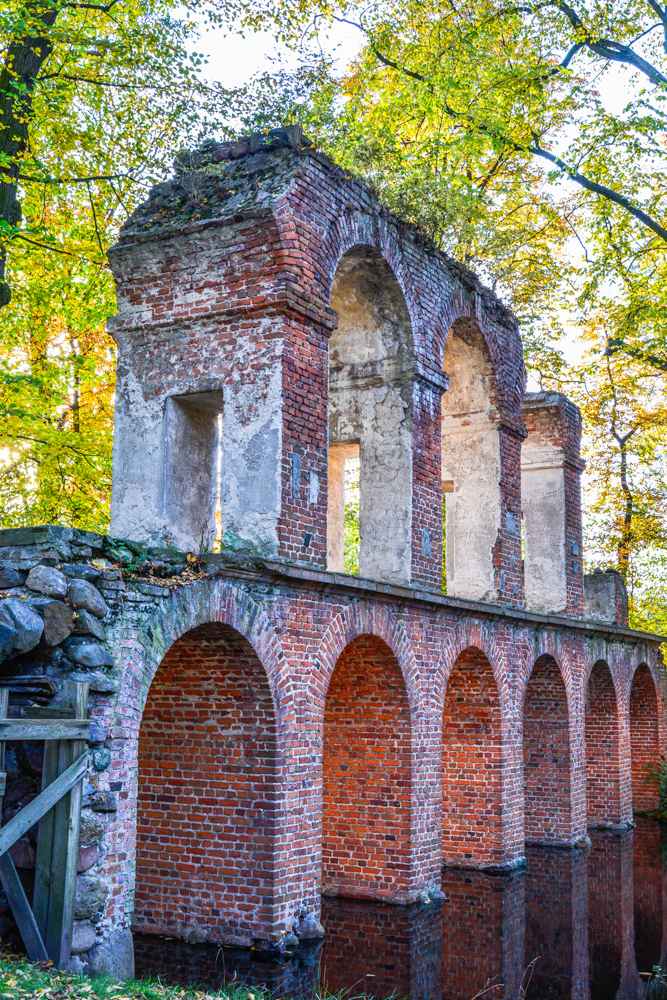I visited a beautiful romantic park! See photos!
An English-style romantic garden, created for over 40 years of life of the founder – Princess Helena Radziwiłł. The park refers to the new cultural and ideological current at that time, shows a return to interest in ancient and medieval architecture, as well as exotic forms.
Many architectural objects characteristic of that period were built in the park. Artificial ruins were erected and lapidaria were collected. To this day, the garden contains many charming corners, as well as interestingly composed buildings against the backdrop of beautiful greenery.
The most recognized object in Arkadia is the Temple of Diana. It is a small building with a portico supported by Ionic columns. On the tympanum there is a quote from Petrarch: “Dove pace trovai d’ogni mia guerra” (“Here I found peace after each of my fights”).
In the Temple of Diana, which was originally a kind of museum, where Princess Radziwiłł collected souvenirs from the past, today there is also an exhibition of sculptures and architectural decorations from ancient Greece and Rome. In addition, the ceiling of the main hall of the building is decorated with a painting by Jan Piotr Norblin “Jutrzenka”. There is also an Etruscan Cabinet in the Diana Temple.
In addition, there is the High Priest Shrine in the park, i.e. a building arranged for an artificial ruin. Built of brick, turf ore and architectural details – ancient and Renaissance sculptures (these include, among others, works of chisel by Jan Michałowicz from Urzędów). From the south-west side there is a wall with herms. The eastern wall of the High Priest’s Shrine is decorated with a white stucco relief by Gioacchin Staggi “Hope feeding Chimera”.
The aqueduct, i.e. a two-story brick building, was founded over the water cascade.
Stone Arch, i.e. the frame of the main viewing axis of the park in Arkadia. It connects the Łupia river with the pond.
Murgrabi’s house, building with a tower and ogival arrangement of ceramic decorations.
Gothic House with the Cave of Sybil, surrounded by an arcade gallery from the south and a chapel in the opposite bank. The building has features of neo-Gothic architecture.
A circus with an obelisk, modeled on a Roman one intended for chariot racing. The obelisk has an engraved dedication on it: “Thanks to Augustus, Helena has set up”, dedicated to Emperor Alexander I, from whom materials for the construction of this facility came from – marble and granites.
Cover from the Tomb of Illusions and Lapidarium.




